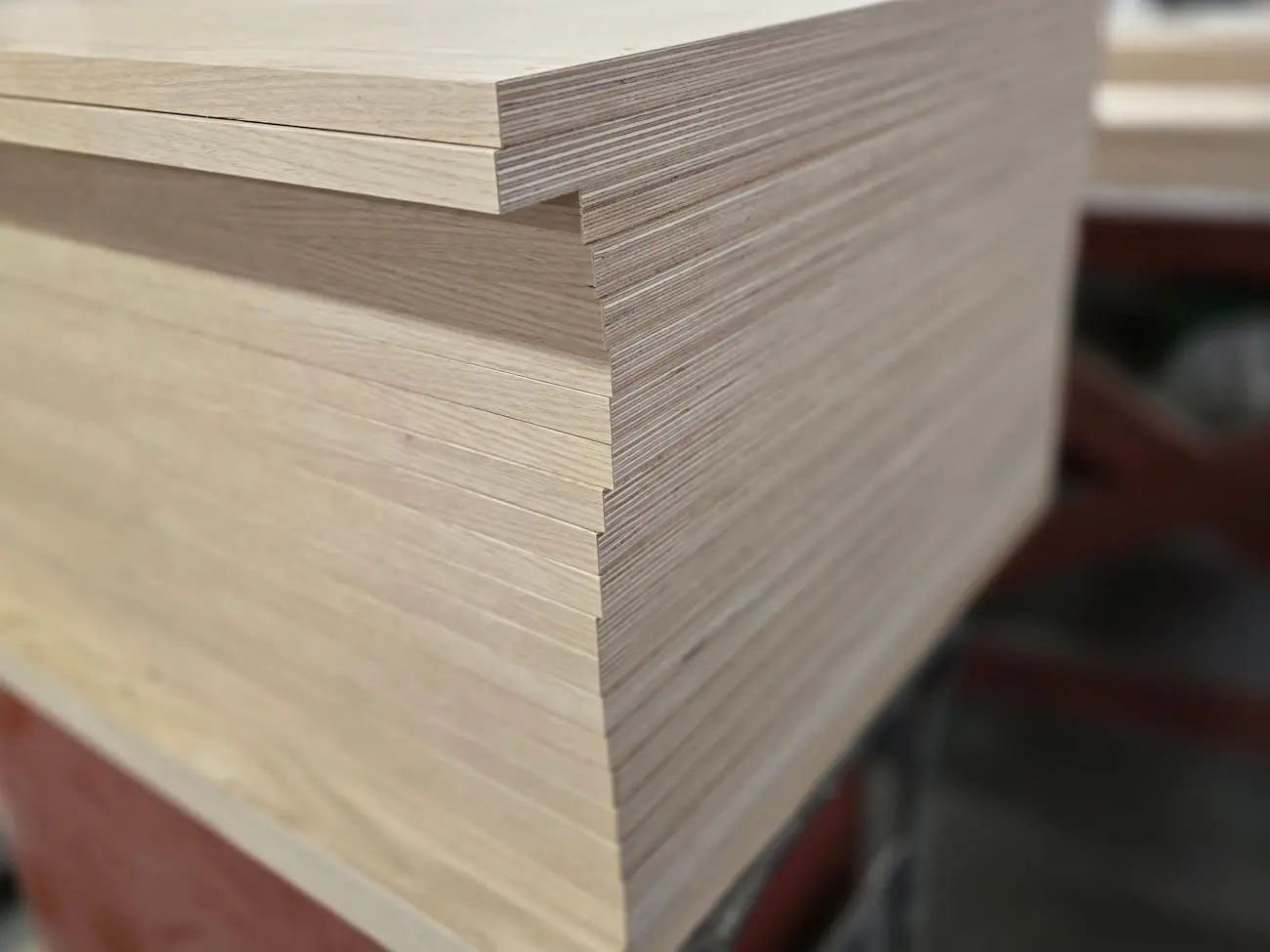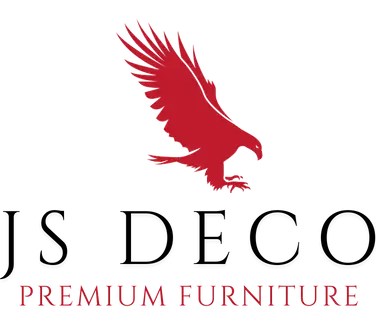
Plywood Furniture vs MDF and MFC: What’s Best for Your Home?
When choosing custom furniture, material selection plays a key role in how your space looks, feels, and performs over time. While MDF and MFC are common in mass-produced interiors, more people are now considering plywood kitchens or wardrobe furniture as a long-term investment, and for good reason.
This article breaks down the differences between plywood, medium-density fibreboard (MDF), and melamine-faced chipboard (MFC) from a homeowner’s perspective, focusing on strength, indoor air quality, and durability in everyday use.
What Is Plywood Furniture?
Plywood furniture is made using boards constructed from multiple layers of thin wood veneer. These layers are glued together, each one laid at a 90-degree angle to the last. This cross-layering gives plywood its natural strength, resistance to warping, and visual appeal, especially when finished with a transparent lacquer or wood veneer.
At JS DECO, we use high-grade birch plywood in most of our cabinetry, which offers excellent performance in kitchens, bedrooms, and living spaces.
Comparing Materials: Plywood, MDF and MFC
1. Material Composition
- Plywood: Made from sheets of real wood (veneers), cross-laminated and pressed using adhesives. Can be certified for ultra-low formaldehyde emissions (E0 or ENF rated).
- MDF: Made from wood fibres and resin, pressed into dense sheets. Smooth and easy to paint, but not moisture resistant.
- MFC: Made from wood chips with melamine coating on both faces. Common in carcasses and budget furniture. Pre-finished, but not easily customisable.
2. Indoor Air Quality and Formaldehyde
All engineered boards contain some adhesives, but their emission levels vary.
| Material | Formaldehyde Emissions | Health Notes |
|---|---|---|
| Plywood (ENF-rated) | Very low | Safer choice for homes, especially bedrooms and kitchens |
| MDF | Medium to high | Requires full sealing to reduce emissions |
| MFC | Lower surface emissions | May off-gas when cut or damaged |
Formaldehyde is a known VOC (volatile organic compound) that can irritate the eyes, nose, and lungs at high levels. If indoor air quality is important in your home, especially for children or allergy-sensitive individuals, low-emission plywood furniture is a safer choice.
3. Durability and Daily Use
| Feature | Plywood | MDF | MFC |
|---|---|---|---|
| Strength under load | High | Moderate | Low to moderate |
| Moisture resistance | Good | Poor | Moderate |
| Lifespan | 15+ years | 5–10 years | 5–8 years |
Plywood holds screws and fixings better and resists warping, even under humidity changes. MDF may swell or soften when exposed to water, while MFC is vulnerable at the edges, especially when chipped or drilled.
4. Visual Appeal and Finish Options
- Plywood furniture offers a natural aesthetic, with exposed edges or hardwood veneer options, and can be lacquered, oiled, or painted.
- MDF takes paint well, making it suitable for shaker-style or traditional doors, but has no grain or character of its own.
- MFC is pre-laminated with decorative patterns (like faux wood), but can’t be refinished or reshaped later.
Environmental Perspective
Plywood — when sourced responsibly — is one of the more sustainable options available today. It uses less synthetic resin than MDF, and unlike MFC, doesn’t rely on printed or plastic-coated finishes.
Most importantly, furniture made from high-quality plywood can last decades, reducing waste over time, especially when built to order rather than mass-produced.
When Do We Still Use MDF or MFC?
At JS DECO, we use plywood as the core material for visible and load-bearing elements, such as cabinet sides, drawer boxes, and doors. However, in specific non-visible areas like back panels, filler pieces, or budget-sensitive internal components, we may occasionally use MDF or MFC — always with care, and only when it aligns with the project’s requirements.
Final Thoughts: Which Material Should You Choose?
If you’re planning a bespoke kitchen, wardrobe, or home office, here’s what we recommend:
- Choose plywood furniture for long-term performance, safety, and quality.
- Use MDF only where a painted finish or detailed routing is essential.
- Use MFC for interior filler panels or when budgets are tight and durability is not a top priority.
Whether you’re renovating a modern apartment or building a long-term family home, plywood offers the best balance of structure, health, safety, and visual quality — especially when paired with water-based lacquers like Adler Bluefin.
Interested in Bespoke Plywood Furniture?
At JS DECO, we build custom plywood kitchens and furniture for clients across the UK. All projects are made to order in our workshop using sustainable materials and safe finishes, with options for supply-only or full installation.
